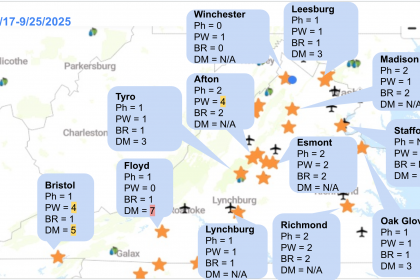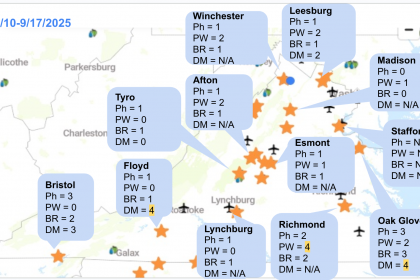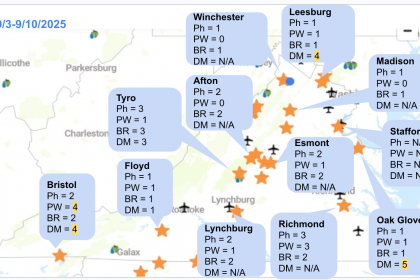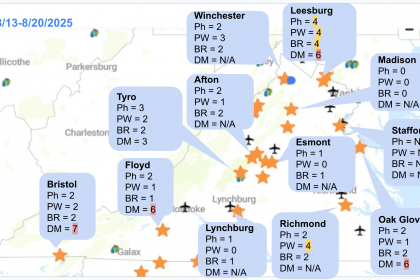
Here are snapshots from the last week, showing the number of days with the risk of each disease: Ph = Phomopsis, PW = Powdery mildew, BR = Black rot, and DM = Downy mildew. N/A means there is no data or some issues with the NEWA or the weather station location. This year, we have been using a different downy mildew model due to inconsistency with the NEWA model. This model uses the past five days of weather to estimate spore production and the next seven-day forecast to estimate the infection risk. If the risk is “High” with a pink highlight, there were enough days with the risk of spore production and more than a few days of rains expected in the next seven days. If the risk is “Low*” this means that the spore production was not high risk, but the forecast calls for more than three days of rain. (Note: yellow highlight ones, which we do not have this week, means the risk of rain in the next seven days is low.)
You can ignore BR and Ph at this point of the season because clusters are no longer susceptible to the infection. We will focus mainly on downy mildew. Several rain events occurred throughout the Commonwealth. Central VA locations show a high downy mildew risk week. (FYI: The Lynchburg area had three weeks of high events.) For those areas, if your vines were not protected for more than 7-10 days, you may want to consider protecting your vines before the next rain events, which seem to happen this weekend (~2-3 days).
Slides from the last Virginia Virtual Vineyard Meeting
Here are my slides.
A list of short-PHI fungicides






This Post Has 3 Comments